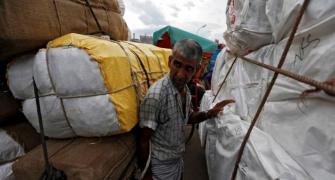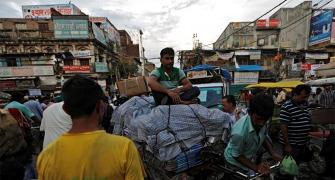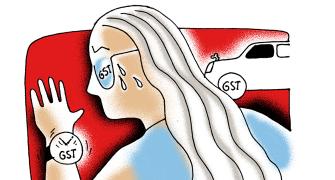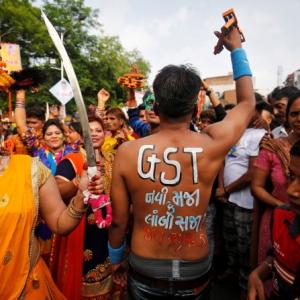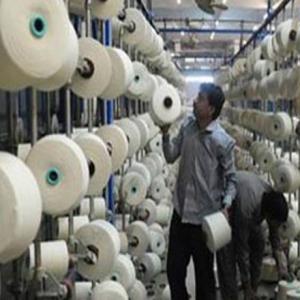The window for registration is open up to September 30.
Illustration: Dominic Xavier/Rediff.com

Just 35 per cent of exclusive central excise taxpayers have migrated to the Goods and Services Tax (GST) regime despite a significant lowering of the exemption threshold.
According to the latest data provided by the GST Network, or GSTN, the information technology backbone, of the 43,854 central excise taxpayers, 15,786 have migrated to the new indirect tax regime.
The numbers have baffled experts because while the earlier exemption was up to a Rs 1.5-crore annual turnover, it has been significantly cut to Rs 20 lakh under the GST.
The window for registration, however, is open up to September 30.
This could also be on account of entities no longer carrying on business, hence filing no return or nil return. They may have chosen not to migrate.
“The data are very surprising. Ideally they should have migrated even though the window is available for another two months.
There could be issues with respect to back-end verification, or lack of understanding of the law,” said Saloni Roy of Deloitte.
She added that it could also be due to entities finding it difficult to apply for migration on the GSTN portal, and then opting for fresh registration.
The story is not different for the service tax, where only about 60 per cent of the exclusive service taxpayers have migrated to the GST.
According to the latest data, of the 1.08 million service taxpayers, only 600,000 have registered for the GST.
Although the exemption limit under the service tax has been doubled to Rs 20 lakh under the GST from Rs 10 lakh, tax experts argue the numbers should have been higher due to the availability of input tax credit even for services under the GST.
“The availability of input tax credit under the GST should have prompted many taxpayers to come under the GST net. The low numbers are intriguing,” added Roy.
Unlike the service tax regime, the GST allows service taxpayers to avail of input tax refund for business expenses on goods such as computers and stationery.
Another reason could be that these taxpayers may be either ‘nil taxpayers’ or ‘non-filers’.
“These may be people that have stopped doing business- manufacturing or providing services,” said M S Mani of Delhi.
He added that that these may be escaping the arduous and painful surrendering of registration under the two Acts - Central Excise and Service Tax.
“Surrendering registration under central excise and service tax is quite a painful process.
So instead, these people may have been filing nil returns or may have stopped filing returns altogether” Mani added.
Besides, existing taxpayers are not mandated under the GST law to migrate, leaving them with an option of automatically giving up their registration.
Bipin Sapra of EY said the significant gap in the case of both central excise and service tax migrations could be on account of problems with respect to registration with the GSTN.
“A lot of people are facing problems with registration. There is no reason why so many people should have been left out. There is a problem with the software. There are 10-15 per cent people trying to register but unable to,” he said.


